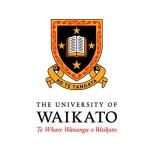Visiting geophysicist shakes it up with public lecture
Geophysicist Professor Kevin Furlong, from Penn State University, USA, never imagined he would witness one of New Zealand’s worst earthquakes while spending his sabbatical in Christchurch.
Professor Furlong became the geophysicist face of the television coverage of the Christchurch earthquake, and is now presenting a public lecture at the University of Waikato titled Putting the 2010 Canterbury Earthquake into Context: The Why and How on October 5.
Professor Furlong has been in Christchurch researching plate tectonics and what happens along plate boundaries as they develop through geologic time. For the past 10 or so years he has been focusing his research on New Zealand, and will spend the second half of his sabbatical at the University of Waikato.
The recent earthquake has broadened the scope of Professor Furlong’s research, as he places the event into models of the overall evolution of the area.
“The Christchurch earthquake was substantially larger than any of us would have expected in that region,” says Professor Furlong, whose public lecture will look at the secondary faults that, while less visible, can still host large and damaging earthquakes.
“If you look at the earth’s surface in the Canterbury region, there is essentially no visible record of past earthquakes, a result of several interacting effects. First, earthquakes in the region have been almost entirely horizontal so no major hills or slopes have been generated; second, the Canterbury plains are constantly being resurfaced by natural events such as flooding; and thirdly, the fact that the area has been under intensive agriculture for more than 100 years tends to erase any visible evidence of past earthquakes.”
His Waikato lecture will focus on the big picture of plate boundary interactions in New Zealand through to some of the interesting features about the fault that moved in Canterbury and the liquefaction of sediments within the city limits.
And what about a similar event occurring in the Waikato? Professor Furlong says that while Hamilton is probably among the sites least likely to have an earthquake of the size of the Canterbury event, it is not immune. In fact, there are micro-earthquakes in the Waikato region on a daily basis, but they are so small that they are not felt and do not cause any damage.
Professor Furlong will be based at the University of Waikato for six months from mid-January 2011 to work with several staff members at the university who are looking at the geologic record of recent tectonics, as well as working with staff and students studying hazards management.
Professor Furlong has had ties with Waikato University for more than six years, and shares a common interest with Waikato’s Earth Scientist Professor Peter Kamp on how the New Zealand continent has developed over the past 40 million years.
Professor Furlong’s public lecture will be held on Tuesday October 5 at the PWC lecture theatre, Hillcrest Road, University of Waikato.
